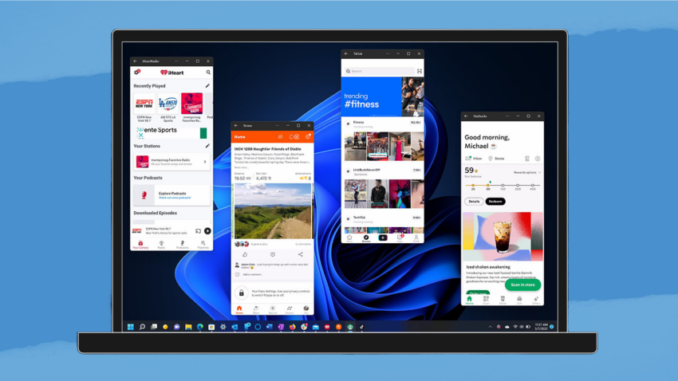

To connect your Android phone to your Windows 11 PC, you can use several methods to sync data, transfer files, mirror notifications, and more. Below are some of the best ways to make this connection.
1. Using Phone Link (Formerly Your Phone Companion)
Phone Link is Microsoft’s official app for connecting Android devices to Windows 10 and Windows 11. With this app, you can view notifications, send and receive messages, make calls, and even mirror your phone’s screen (on some devices).
Steps:
- Install the Phone Link App on your Windows 11 PC:
- Open the Microsoft Store on your PC and search for “Phone Link.”
- Install the app and open it.
- Install Link to Windows on your Android Phone:
- Most Samsung and Surface Duo devices come with Link to Windows pre-installed.
- For other Android phones, download the Link to Windows app from the Google Play Store.
- Sign In with Microsoft Account:
- Open both apps (on PC and phone) and sign in with your Microsoft account.
- Pair the Devices:
- On your PC, follow the setup steps in the Phone Link app. You’ll see a QR code.
- Open Link to Windows on your Android, select “Link your phone and PC,” and scan the QR code displayed on your PC.
- Grant Permissions on Your Phone:
- The app will request various permissions (contacts, media, notifications, etc.) to enable all features. Grant the permissions to complete the setup.
- Start Using Phone Link:
- Once connected, you can access your phone’s notifications, messages, photos, and more directly from your Windows 11 PC.
Note: Some features, like screen mirroring, might only be available on selected Samsung devices.
2. Using Bluetooth
If you just want to transfer files between your phone and PC, Bluetooth can be a simple option.
Steps:
- Enable Bluetooth on Both Devices:
- On your Android phone, go to Settings > Bluetooth and enable it.
- On Windows 11, go to Settings > Bluetooth & devices and turn Bluetooth on.
- Pair Your Devices:
- In Windows 11 Bluetooth settings, click Add device > Bluetooth and select your Android phone.
- Confirm the pairing code on both devices to pair them.
- Send or Receive Files:
- On your Windows 11 PC, open Bluetooth settings, select Send or receive files via Bluetooth, and choose the direction (send/receive).
- On your Android device, select the file to send via Bluetooth and choose your PC from the list of available devices.
3. Using a USB Cable
Connecting via USB is one of the simplest and most reliable methods for transferring files.
Steps:
- Connect Your Phone to Your PC with a USB Cable.
- Set USB Mode on Your Phone:
- After connecting, you’ll see a notification on your Android device asking what you want to do with the USB connection.
- Select File Transfer (MTP) mode.
- Access Files on Your PC:
- Open File Explorer on your Windows 11 PC.
- You should see your phone listed as a connected device. Click on it to browse files and transfer data.
4. Using Nearby Share
Nearby Share is Android’s answer to Apple’s AirDrop, allowing wireless file sharing with Windows PCs that support the feature.
Steps:
- Ensure Nearby Share Is Enabled on Your Android Phone:
- Go to Settings > Google > Device connections > Nearby Share and enable it.
- Enable Nearby Sharing on Windows 11:
- Go to Settings > System > Nearby sharing and select Everyone nearby or My devices only to allow sharing.
- Share Files:
- On your Android phone, select the file you want to share, choose Nearby Share, and select your Windows 11 PC from the list of available devices.
5. Using Third-Party Apps (e.g., AirDroid or Pushbullet)
Apps like AirDroid and Pushbullet can also connect your Android device to your PC, offering features like file transfer, notification mirroring, and message syncing.
Steps:
- Download the App on Both Devices:
- Install AirDroid or Pushbullet on your Android phone (from the Play Store) and on your Windows PC (from their respective websites or Windows Store if available).
- Sign in with Your Account:
- Create an account if necessary and sign in on both devices.
- Connect and Configure:
- Follow the app’s setup steps to connect your devices and enable the features you need, such as file transfer or notification mirroring.
These methods cover a range of features, from basic file transfer to a more integrated experience with notification syncing and screen mirroring. Try the one that best suits your needs!
Leave a Reply